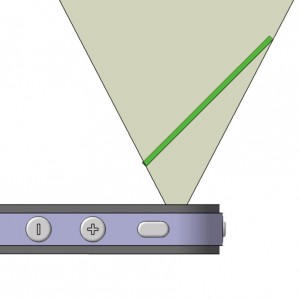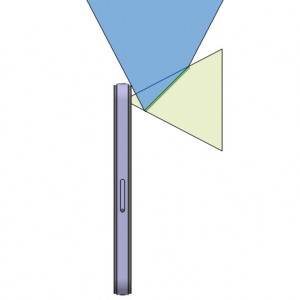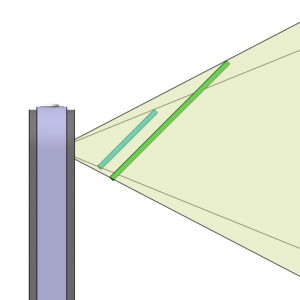The primary function of HiLO Lens is to reflect an image 90 degrees. The obvious way to do this is with a mirror angled at 45 degrees. We experimented with this idea about a year ago.
The iPhone has a large field of view (FOV). The FOV of the iPhone4 is 55° x 41° (close to a 30mm SLR)
Aesthetics of an iPhone accessory are very important to most users. The major problem with a mirror is how big it needs to be to cover the full field of view of the iPhone camera. It means having a large and fragile mirror. An accurate model of the mirror is shown below.
In iPhone video only the central pixels of the sensor are used, this reduces the FOV to 44° x 25° You have probably noticed how much smaller the FOV is when shooting video.
Over the last year several mirror based designs have emerged. They make a clever compromise by limiting the size of the mirror so it works for video. But for photos the field of view will be severely limited. This is one reason we think photographers are not interested in mirror based solutions (e.g. MirrorCase).
Below we can see how the smaller iPhone video FOV allows for a much smaller mirror. But sacrifices a large portion of the camera FOV.
For a video only solution the mirror is much smaller. Still bigger than HiLO Lens but not as ridiculous as a mirror covering the full FOV.
For an accessory to be successful there needs to be a market large enough to justify investing in quality manufacturing processes. We think mirrors are just not cool enough for an iPhone.
The additional optics make HiLO Lens a lot more expensive to manufacture. But if you own an iPhone you want the best solution, not necessarily the cheapest solution. Otherwise you would own a Nokia…




